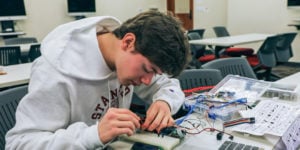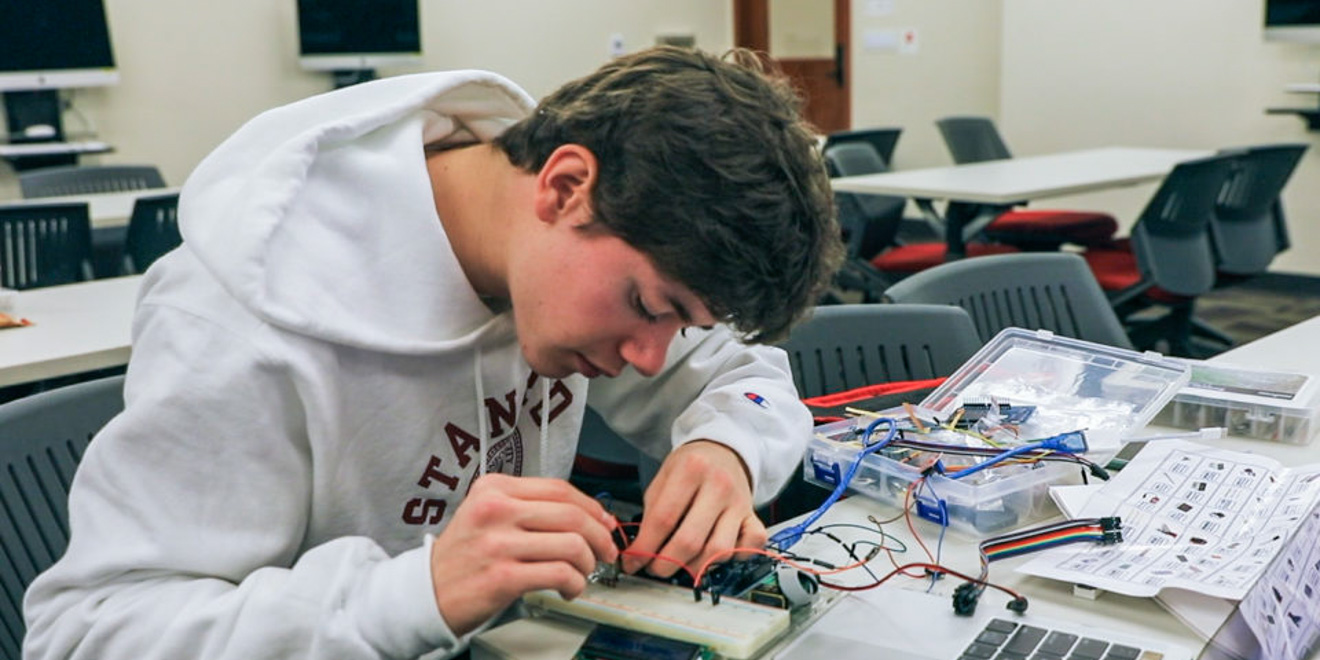In the new autumn quarter course BIO 61: “Science as a Creative Process,” students learn about the process of creative problem solving in the sciences. Directed toward freshmen interested in STEM, the course provides room for students to explore technology through experiments in addition to teaching students about the history of creative thinking in science.

With no prerequisites, the course is a part of a series of three “On Ramp” courses established by the biology department to “actively engage beginning students with the excitement of modern biology and develop the critical thinking, analysis, reading and communication skills required” for majoring in biology. It is led by biology department chair Tim Stearns and biology and applied physics professor Steven Block.
This course is divided into three open-ended principal projects, each drawing from and developing students’ skills in fields like computer science, chemistry and statistics. As part of one project, students are asked to design “Piezo Poppers,” which are makeshift cannons that use a piezoelectric device to ignite alcohol-based fuels. Through design modifications and trial runs, students learn about what Block calls the “process of creative failure.”
In another project, students use Arduino probes and a variety of compatible sensors to answer a scientific question of their choosing. After reading about how faster fidget spinners are effective in helping children with ADHD to focus, Margot Bellon ’21 modified her device to test how the number of ball bearings in fidget spinners affects the rate at which the spinners rotate.
“I’ve learned that in the process of experimentation there’s a lot that can go wrong. But there’s a lot of reward that comes out of it,” Bellon said in an interview with Stanford News.
Other student projects include Arduino-based weather stations, noise-level recorders and sunglass testers.
The course’s final project takes the shape of a mock grant proposal, in which students design and present their own experiments. Students are prompted to consider equipment and budget as well as come up with ways to analyze data and deal with error. Though the experiment is not ultimately carried out, Stearns and Block believe that the project helps students explore their interests without being bogged down by resource limitations.
Though many think of science as a system of established equations and laws, Block and Stearns expressed their desire to emphasize the importance of creativity in the scientific process.
“What we’re trying to convey in this course is not specific information … but, rather, the way that you approach a question, using the tools of science, and come to a definitive answer as best you can,” Stearns told Stanford News.
Contact Sean Chen at kxsean ‘at’ stanford.edu.
